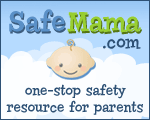 Over the holidays I finished up Daniel Goleman's book, Ecological Intelligence: How Knowing the Hidden Impacts of What We Buy Can Change Everything. I highly, highly, highly recommend it! (That was three highlys, in case you weren't paying attention.) Goleman's premise in the book is that if consumers had all of the facts about a product in front of them, something he calls "radical transparency," then they would be making smarter choices for their health, the health of the environment and the well being of others.
Over the holidays I finished up Daniel Goleman's book, Ecological Intelligence: How Knowing the Hidden Impacts of What We Buy Can Change Everything. I highly, highly, highly recommend it! (That was three highlys, in case you weren't paying attention.) Goleman's premise in the book is that if consumers had all of the facts about a product in front of them, something he calls "radical transparency," then they would be making smarter choices for their health, the health of the environment and the well being of others.It all sounds so simple, but Goleman isn't talking about knowing the recycled content of a product. In fact, he considers most green claims, even those that are one hundred percent true, to be a form of greenwashing. Take an organic cotton t-shirt. Sure, removing pesticides from the cotton-growing process can have major impacts on the level of pesticides ending up in the environment. However, what about the amount of water necessary for growing the cotton used in the t-shirt? What about the dye that was used to imbue it a lovely blue? How much of that dye ended up in local waterways? What about the carcinogenic ingredients that make up many commonly-used dyes?
Goleman's point is not to squash people's hopes of making consumer choices that can improve the environment. He does, however, encourage a broader look at items. A Life Cycle Analysis (LCA) of an item allows people to consider all of the parts and processes necessary for creating that item and measure its impact on nature from production through disposal. Having this kind of information for any item easily available to everyone is what Goleman means when he writes about radical transparency.
What's even better is that Ecological Intelligence isn't one of those books that leaves you depressed about how many issues surround our daily consumption. Goleman actually sees radical transparency as something that we're getting closer to. He brings up great resources that work using this model, like the GoodGuide and the Environmental Working Group's Cosmetic Safety Database. He sees a future in which people have all of the information they need, and their response to this information urges companies to continually improve their products and their processes. He sees a future where profit and public welfare will not pull in opposite directions, but rather work together towards safer products, healthier workers and environmental sustainabilty.





0 comments:
Post a Comment